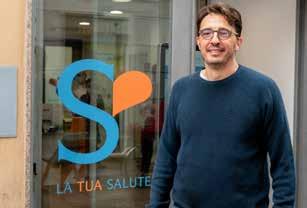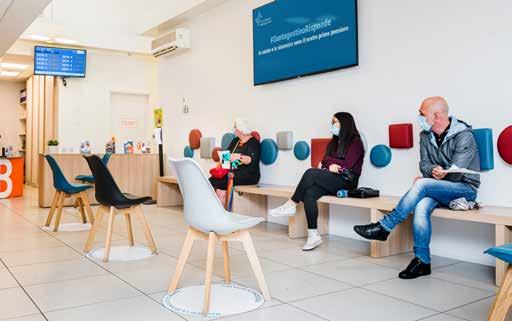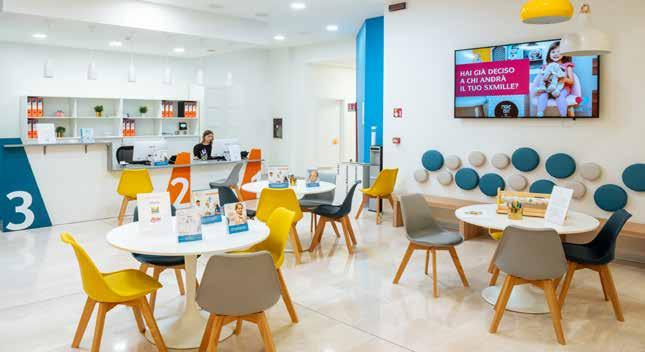
3 minute read
Ceo of Centro Medico Santagostino
Luca Foresti Ceo of Centro Medico Santagostino
the challenge is to guarantee a health Proximity service
Advertisement
Above all, the post-pandemic scenario is opening up with opportunities for our sector, because the health emergency has clearly put the health factor at the forefront, making it top of mind. Further innovation therefore appears to be the way forward. Even if the whole history of the Santagostino Medical Centre is marked by experimentation and attempts to break the mould. We currently have 31 facilities, including two diagnostic centres, in Milan, Lombardy, Bologna and Rome, with a turnover in 2021 of over 49 million euro. We started in 2009 by opening the first street outpatient clinics in city centres, starting from Piazza Sant’Agostino in Milan. The second experiment was to open 4 outpatient clinics in Esselunga supermarkets. Then, during the pandemic we carried out a act as an anchor, as a point of reference for people, and decide to create a health court, in the same way as the food court. Thus bringing together within the same area: an outpatient clinic, a pharmacy, a blood collection
«shOpping centre OperatOrs shOuld realise that the health wOrld can act as an anchOr, and therefOre create a health cOurt, in the same way as the fOOd cOurt»
third retail experiment, starting up 3 centres within line 5 of the Milan metro and now we are hoping to open another one at a station in the city centre. On the other hand, we have not yet tested shopping centres. The biggest obstacle is rents, which to date are not sustainable with our model based on an offer of services and not on the sale of products: for us, the square metre has to be interpreted in relation to how much time we have to dedicate to each patient. However, this is another reason why the managers of shopping centres should understand that the health world can point and various centres – diagnostic, dental, vaccination, rehabilitation, psychology – as well as a community house, thus also covering the public offer. In this way, citizens will begin to perceive the possibility of going for medical treatment in shopping centres too. As far as our development is concerned, in 2022 we will focus both on Rome, where we should open, bureaucracy permitting, 3 or 4 centres, and on the expansion of Milan, where we will open another 3 or 4 facilities, and the hinterland, perhaps starting from Monza, San Donato Milanese, Segrate. In particular, in Milan,

▲Santagostino waiting room ►Santagostino, Monza
Centro Medico Santagostino

the need is to cover the 4 corners of the city with our diagnostic centres: we are currently in the centre (in Piazza della Repubblica) and in Piazzale Corvetto, so we would like to open in the North, East and West. Our goal is to move increasingly closer to the users, to ensure that it does not take more than 10 minutes for someone from Milan to get to us. In other words, we want to guarantee a health service of proximity. And that’s not all. During the pandemic we debuted with a new vertically integrated service: the women’s health centre in Milan, which joins the other vertical centres already active dedicated to psychotherapy. We would like to open a vertically integrated centre for eye problems and perhaps one for children’s healthcare. And, in general, in 2022 and 2023 I am expecting to experience considerable growth in the 3 most popular areas: radiology, blood tests and psychotherapy. The only real threat? Unfortunately, there are not enough doctors, nurses, health workers in Italy and the situation looks set to get worse and worse. So we will have to invest more and more in technology, so that each operator can take care of more patients. •










